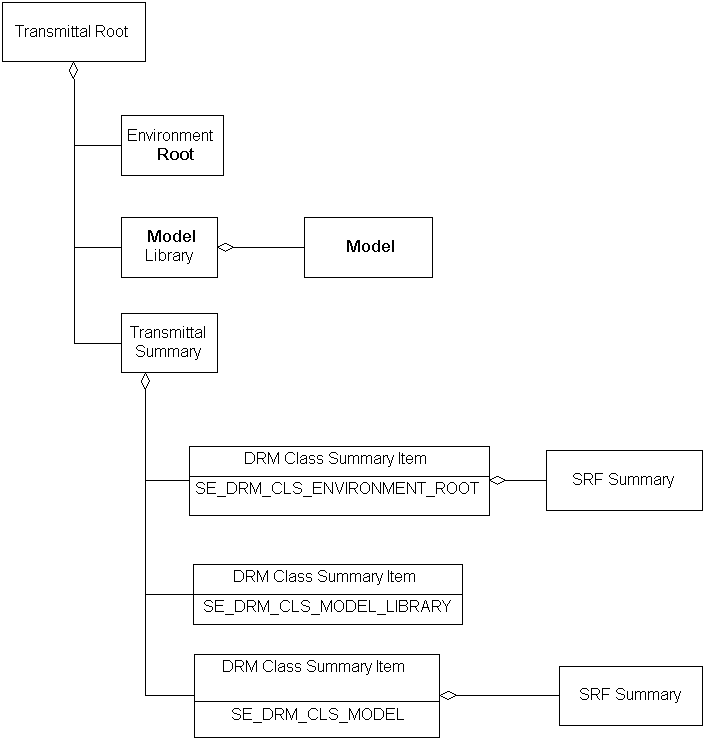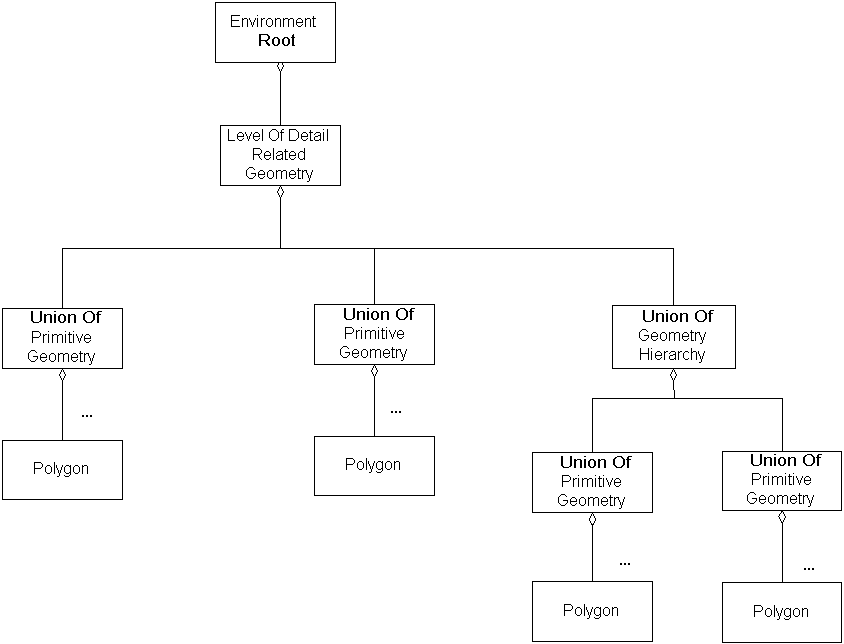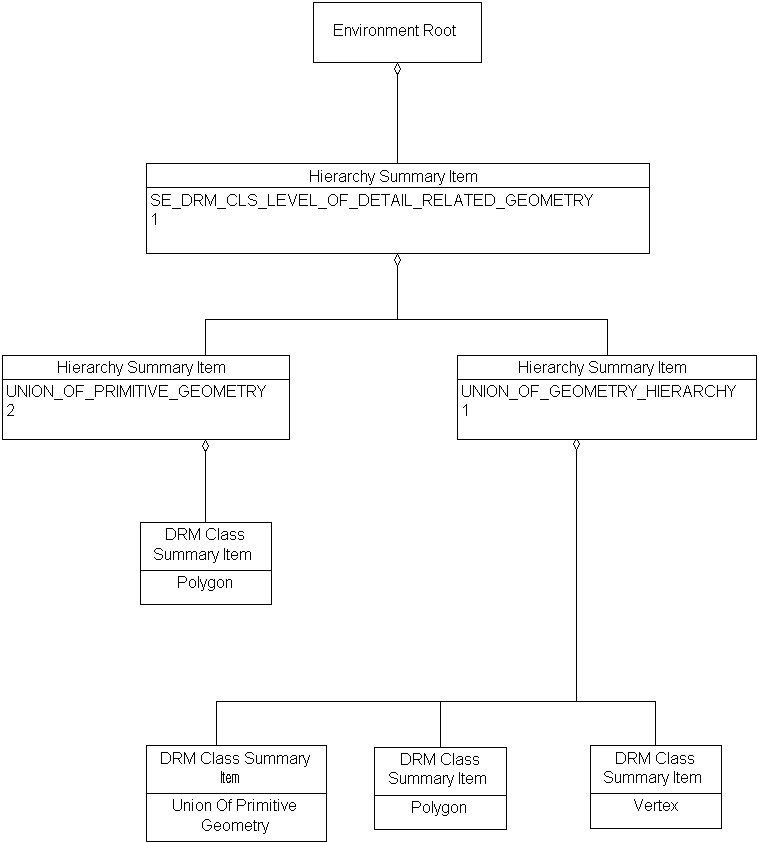The SEDRIS Data Representation Model
APPENDIX A - Classes
DRM Class Summary Item
|
|---|
Class Name: DRM Class Summary Item
Subclasses
This DRM class is concrete and has no subclasses.
Definition
An instance of this DRM class is used as part of a summary of a
transmittal's content to represent instances of a class (specified
by the drm_class
field value) that are used that transmittal.
<DRM Class Summary Item>
instances are combined together to form a list of the classes that
are present in a transmittal or part of a transmittal. Each such
list has only one entry per class. However, it does not have to be
a complete list of every class used, and it can include abstract classes.
Each <DRM Class Summary Item> can
optionally have a list of
<EDCS Use Summary Item> instances
giving the classifications that are attached to instances of that
class in the transmittal. Obviously this only makes sense for
those classes that can have classification information.
Each <DRM Class Summary Item>
can also have a list of <SRF Summary>
instances giving the SRFs defined in the transmittal by instances
of that class. Obviously this only makes sense for those classes
that contain SRF parameters.
Primary Page in DRM Diagram:
Secondary Pages in DRM Diagram:
This class appears on only one page of the DRM class diagram.
Example
A summary of the classes used in an entire transmittal.

A summary of classes used in part of a transmittal. (See the
FAQ list also).
The geometry portion of the given
<Environment Root> instance has the
following layout.

The geometry portion of the given
<Environment Root> instance is therefore
summarized as follows.

FAQs
- Why is the
<Union Of Primitive Geometry>
in Example #2 a <DRM Class Summary Item>
rather than a <Hierarchy Summary Item>?
This illustrates the possible use of
<DRM Class Summary Item> if we were
to use the <Hierarchy Summary Item> to
show only the top level hierarchy (for some reason).
The data producer may decide, for a number of reasons, that it
would be useful to summarize the hierarchy down to a certain level
only, but that it's also useful to show that there are aggregates
such as <Union Of Primitive
Geometry> below that level - i.e.,
showing that they exist, rather than showing their position in the
hierarchy, is what is of value.
- Hey! The examples for <DRM Class
Summary Item> show <Polygon> and
<Vertex> instances as
<DRM Class Summary Items>, but
the examples for
<Primitive Summary Item> show them as
<Primitive Summary Items>!
Isn't this ambiguous? What's going on?
This isn't ambiguous as the two classes
(<DRM Class Summary Item> and
<Primitive Summary Item> summarize
different aspects of a transmittal. Therefore the same classes can (and
will) quite legitimately be represented by both. So
<Polygon> and <Vertex> can
turn up as types of <DRM Class Summary
Items>, to summarize their presence in the transmittal, and as
<Primitive Summary Items>,
to show common patterns of objects in which they are used.
Constraints
Composed of (two-way metadata) (inherited)
Composed of (two-way metadata)
Component of (two-way)
Notes
Composed of Notes
If present, the list of <EDCS Use Summary Item> components of
a <Base Summary Item> instance summarize EDCS usage by instances
of the class specified by drm_class that occur somewhere in
the scope being summarized.
Component of Notes
Here the given instance represents a class used in part of
the given transmittal.
Here the given instance represents a class used in the entire
the given transmittal.
Fields Notes
The drm_class field indicates the DRM class of the object(s)
represented by the given <Base Summary Item> instance.
Prev: Distance LOD Data.
Next: EC Augmented 3D Location.
Up:Index.
|
Last updated: July 16, 2004
|
Copyright © 2004 SEDRIS™
|
|


